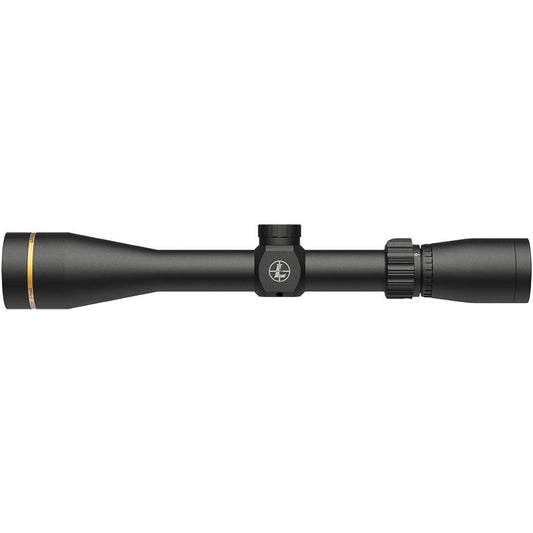

Leupold VX-Freedom Rifle Scope 3-9x40mm excels in providing reliable performance for both hunters and target shooters. This versatile scope covers a popular magnification range, allowing for precision at various distances. Its second focal plane design ensures that the reticle remains the same size across all magnification levels, simplifying target acquisition. Built with a lightweight and rugged construction, it can withstand the demands of outdoor use, making it an ideal choice for any rifle setup.
Utilizing finger-click adjustments for both windage and elevation, the VX-Freedom allows for quick, accurate corrections in the field. An easy-to-use resettable index ring facilitates zeroing in on your target, ensuring consistent performance shot after shot. With a 40mm objective lens diameter, this scope provides ample light transmission for improved visibility in low-light conditions.
Features:
- PRECISE ADJUSTMENTS for quick windage and elevation corrections with finger-click controls.
- LIGHTWEIGHT DESIGN ensures easy handling and portability during long hunting trips.
- SECOND FOCAL PLANE keeps the reticle size constant for easy target acquisition across magnification levels.
- RUGGED CONSTRUCTION withstands harsh environments and impacts for long-lasting reliability.
- 40MM OBJECTIVE LENS enhances light transmission for better visibility, especially in low-light settings.
- RESETTABLE INDEX RING simplifies zeroing, allowing for quick adjustments in the field.
- WIDE EYE RELIEF of 4.2 inches at low magnification for comfortable viewing.
- VARIABLE MAGNIFICATION from 3x to 9x provides versatility for various shooting scenarios.
Technical Specifications Table
| Feature | Details |
|---|---|
| Magnification | 3-9x |
| Objective Lens Diameter | 40mm |
| Weight | 12.2 oz |
| Reticle Focal Plane | Second Focal Plane |
| Windage Adjustment Type | Finger Click |
| Elevation Adjustment Type | Finger Click |
| Elevation Adjustment Range (MOA) | 60 |
| Windage Adjustment Range (MOA) | 60 |
| Eye Relief Low Mag | 4.2 in |
| Eye Relief High Mag | 3.7 in |
What's in the Box?
- Leupold VX-Freedom Rifle Scope
- Lens covers
- Padded case
- User manual
Customer Reviews
“The clarity is outstanding, even in low light. Perfect for my hunting trips!”
“Easy to mount and sight in. A great value for the price.”
“Lightweight yet durable. This scope has held up well through rough conditions.”
FAQ
Many customers ask about the VX-Freedom's performance in varying light conditions. The 40mm objective lens effectively gathers light, making it suitable for early morning or late evening hunts. The second focal plane reticle also ensures that your target remains visible without the distraction of changing size.
Maintenance is another common concern. Regularly check the scope's zero after significant use, especially when transitioning between environments. A simple wipe with a microfiber cloth will maintain the lens clarity. For those comparing with other brands, the VX-Freedom offers a solid balance of quality and affordability, making it a great option for both novice and experienced shooters.
Similar Models
Looking for comparable options? Explore the wide range of Leupold rifle scopes, including the VX-3i series for enhanced light transmission and durability or the VX-5HD for advanced optics technology. Each model is crafted to meet the demands of serious hunters and shooters. Check out our full collection for a scope that fits your specific needs.
You May Also Like
Here’s some of our most similar products people are buying. Click to discover trending style.






